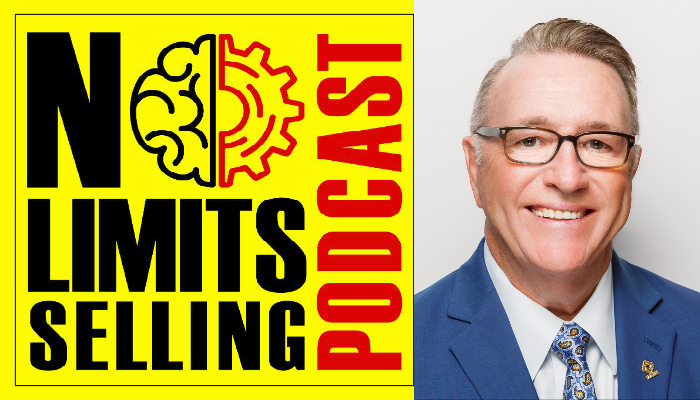Bob Perkins on The Power of Taking Mental Breaks
On Episode 169 of The No Limits Selling Podcast, we have Bob Perkins. With over 30 years of executive leadership experience, Bob is a nationally-recognized Inside Sales innovator who is determined to take our profession to the next level of professionalism and performance. In this episode, Bob shares with us why taking mental breaks is so important and powerful for us.
Back in 2008, Bob formed a vision for the future state of Inside Sales, and from that, the AA-ISP was born. Having grown into a global community for like-minded Inside Sales professionals, the AA-ISP is our industry's leading resource for advancing sales reps, leaders, and organizations.

Contact Bob:
[EDITOR’S NOTE: This podcast is sponsored by No Limits Selling. It is a fun, fast-paced podcast that delivers hard-fought business advice that you can implement today to improve your sales and performance]
Interested In Our Real Estate Coaching Services? Explore Our Website: Link
Feeling Not Well Today? You Can Use Our Mindset Boosters App To amp Up Your Mood: Link
Find us on Social Media:
LinkedIn | Facebook community | Instagram
Like what do you listen to? Subscribe to our podcast!
Ready to become fearless? We can help you become fearless in 60 days so you accomplish more in your career Schedule A 15 min Call with Umar
Summary
Introduction and Overview
The podcast begins with an introduction of Bob Perkins, the founder of the American Association of Inside Sales Professionals (AA-ISP). The host, Umar Hameed, discusses the evolution of inside sales and how it has moved from being an unsung hero to the forefront of sales operations.
Performance and Potential of Sales Teams
The conversation moves on to the performance of sales teams, specifically the A, B, and C players. Bob agrees with Umar's assessment that while A players are high performers, there are B players with the potential to step into the A column. Bob emphasizes that it's hard to manufacture high performance and much of it depends on an individual's desire and commitment to improvement.
The Role of Culture and Leadership
Bob highlights the importance of culture and leadership in driving high performance. He believes that the best sales reps need empowerment and high expectations and that a culture of high expectations can lead to better performance without the need for micromanagement. He also suggests that B players can improve by modeling the behavior of A players.
The Impact of Underperformance
When asked about the potential sales left on the table due to underperformance, Bob estimates that nearly 50% of sales reps don't achieve 100% of their annual quota. This suggests that there is significant room for improvement and potential sales that could be captured with better performance.
Leadership by Example
Bob shares some personal anecdotes to illustrate the concept of leadership by example. He talks about his own experience as a manager making cold calls and how this was appreciated by his team. He also shares a story about his brother, a West Point graduate, who led by example during military maneuvers.
The Importance of Taking Breaks
Toward the end of the podcast, Bob discusses the importance of taking breaks to maintain productivity and avoid burnout. He suggests going outside, getting some sun, and taking walks as ways to take mental breaks during the day.
Conclusion
In this podcast, Bob Perkins, the founder of the American Association of Inside Sales Professionals, discusses the evolution and future of inside sales. He emphasizes the importance of individual commitment to improvement and the role of leadership in fostering a culture of high expectations and empowerment. Perkins shares personal anecdotes to illustrate the concept of leadership by example and highlights the importance of taking mental breaks to maintain productivity.
Despite the challenges, he estimates that nearly 50% of sales reps don't achieve 100% of their annual quota, indicating a significant potential for improvement and untapped sales. The podcast concludes with Perkins encouraging inside sales professionals to take pride in their profession and continue striving for excellence.
Questions & Answers
Who is Bob Perkins?
What is the role of individual commitment in sales performance?
How can leadership foster a culture of high expectations in sales teams?
What is leadership by example in the context of sales?
Why is taking mental breaks important for sales professionals?
What percentage of sales reps don't achieve 100% of their annual quota according to Bob Perkins?
How can inside sales professionals take pride in their profession?
Don’t miss this opportunity to transform your real estate career with one-on-one coaching. As an experienced real estate coach, I, Umar Hameed, am dedicated to helping you unlock your full potential and achieve your real estate goals. To learn more about who am I and my clients ↓
If you’re ready to take the next step, book an appointment with me today and begin your journey toward success in the real estate industry.
